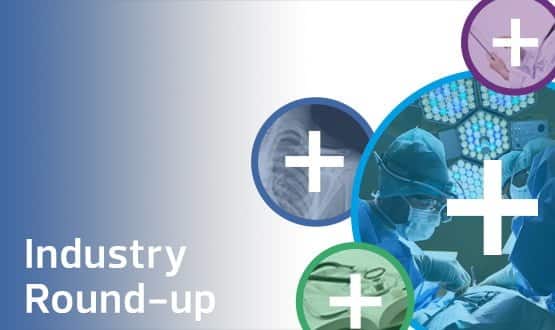HANDI hints
- 19 May 2014

The Royal College of General Practitioners was invaded by ‘appy people’ last week as it played host to the HANDI spring symposium.
On a gorgeous spring day, while the sun was shining down on London, 100 or so app developers, NHS professionals and enthusiasts sat down inside to discuss everything app related.
Participants included chief clinical information officers, NHS IT directors, owners of small and medium sized enterprises and officials from NHS England.
As the temperature built outside, it also rose a few degrees in the air-conditioned building as they argued that the NHS is still behind the times when it comes to embracing mobile technology; and debated what can be done about that.
Snake oil and EU procurement
One of the sessions took place in a room on the fifth floor of the college, overlooking the London skyline. Mark Brown, director of community interest company Social Spider, brought people down to earth by arguing that health service commissioners go about procuring apps in the wrong way.
The company produces an app called ‘Doc Ready’, which helps young people prepare for their first mental health appointment with their GP. It sounds like an exciting innovation but, he said: “’New and exciting’ to developers sounds like ‘hmm, no evidence base’ to sceptical commissioners.”
Even worse, he added: “The public sector is awful at identifying problems that can be solved by tech. Commissioners aren’t saying which problems they need solved. [Instead they have] a shopping list of features they want an app to have, without knowing if anything on that shopping list will solve any of what they’re intending it to solve.
“You are about to be sold digital snake oil by people who promise the earth; knowing that you can’t tell a good solution from a bad one.”
John Pyle, an open source consultant at NHS England, argued that many of the issues with commissioning stems from European rules around procurement.
“The trouble is that the European Union procurement processes are always explicitly designed to prevent you from building up a relationship with someone and doing something with a supplier because you trust them”, he said.
“The way you have to procure stuff, you have to say exactly what you want and you describe the criteria you’re going to use to assess people’s responses. They respond to it and you might think ‘you know what, I’m picking the wrong thing here, but if I don’t pick that thing, I’m going to get taken to court.’”
Overcoming the legacy of NPfIT
Another topic, which proved to be the root of many a discussion throughout the day, was open source versus proprietary software.
As it happened, the symposium took place on the day that NHS England announced the start of bidding for the second round of its technology fund.
This has a significant focus on open source (with a list of companies providing open source products for trusts to consider), and a clear steer that trusts should look to buy from companies that use standards and open up their application programming interfaces.
Many app developers and smaller companies already do both, but have still struggled to get uptake in the market. Pyle, who is working on NHS England’s open source programme, said much of this can be blamed on the National Programme for IT.
The programme was set up to create a national infrastructure of IT systems; with large implementers delivering ‘strategic’ systems to healthcare communities. It is known for not delivering what it was meant to deliver; but Pyle argued that its failure is not the biggest problem.
Perhaps a more lasting effect of the programme has been that it has removed from the market place a lot of the businesses that might have been part of the ‘natural economy’ of suppliers from which trusts could choose; and that it has anyway left trusts unsure of what they should be doing.
“By making everything centralised, it not only took out the market place, but took from trusts themselves a lot of the skills needed to decide what’s a good solution to a problem and how to go about buying it and how to get support for it and so forth.”
He said that the aim of the open source programme is to “reinvigorate the market” and give room to smaller suppliers who are interested in open sourcing their code. In the new world, he encouraged app developers to think open source.
An app for overload
Still, as the delegates headed off to dinner, followed by beer (or informal networking, as it was billed), the most surprising topic of conversation turned out to be “how wonderful paper is.”
“Not surprisingly, there’s a lot of paper in the NHS. Paper is tactile, we feel it, it’s responsive, to change, we don’t need to be skilled to use it, it’s visually stimulating, you don’t need to remember a log-in to use it,” said David Newey, the sales director at CIS Oncology, which supplies a cancer e-prescribing system to the NHS.
His comment was directed at developers, reminding them that the actual users need to be remembered throughout the creation process.
“User interfaces are so important,” he said. “We are moving into a mobile and tablet focussed era and we need to embrace this to make the NHS paperless.”
Newey argued that developers should look at creating abridged versions of major systems as apps, to make the process as easy as possible; and to avoid overwhelming NHS staff with the vast amount of data becoming available.
Ewan Davis, founder of HANDI, agreed that the data revolution is most definitely upon us. “We are about to face a massive explosion in the amount of data we have available with the wearable technology, genomes, personalised medicine,” he said.
“Systems have become too complex to manage. If you look at the large London teaching hospitals for instance, you find 250 systems in a hospital. That creates barriers to change.”
It’s good to talk
As the day drew to a close, the big question remained how to solve these issues. However, it may have been answered in one of the very first sessions of the day, by Mark Brown.
He gave his audience a top tip for how to solve the curse of the “not fit for purpose products” and less than optimal technology with which so much of the NHS is still doing battle. “The answer is really, really simple,” he said. “We talk to people.”




